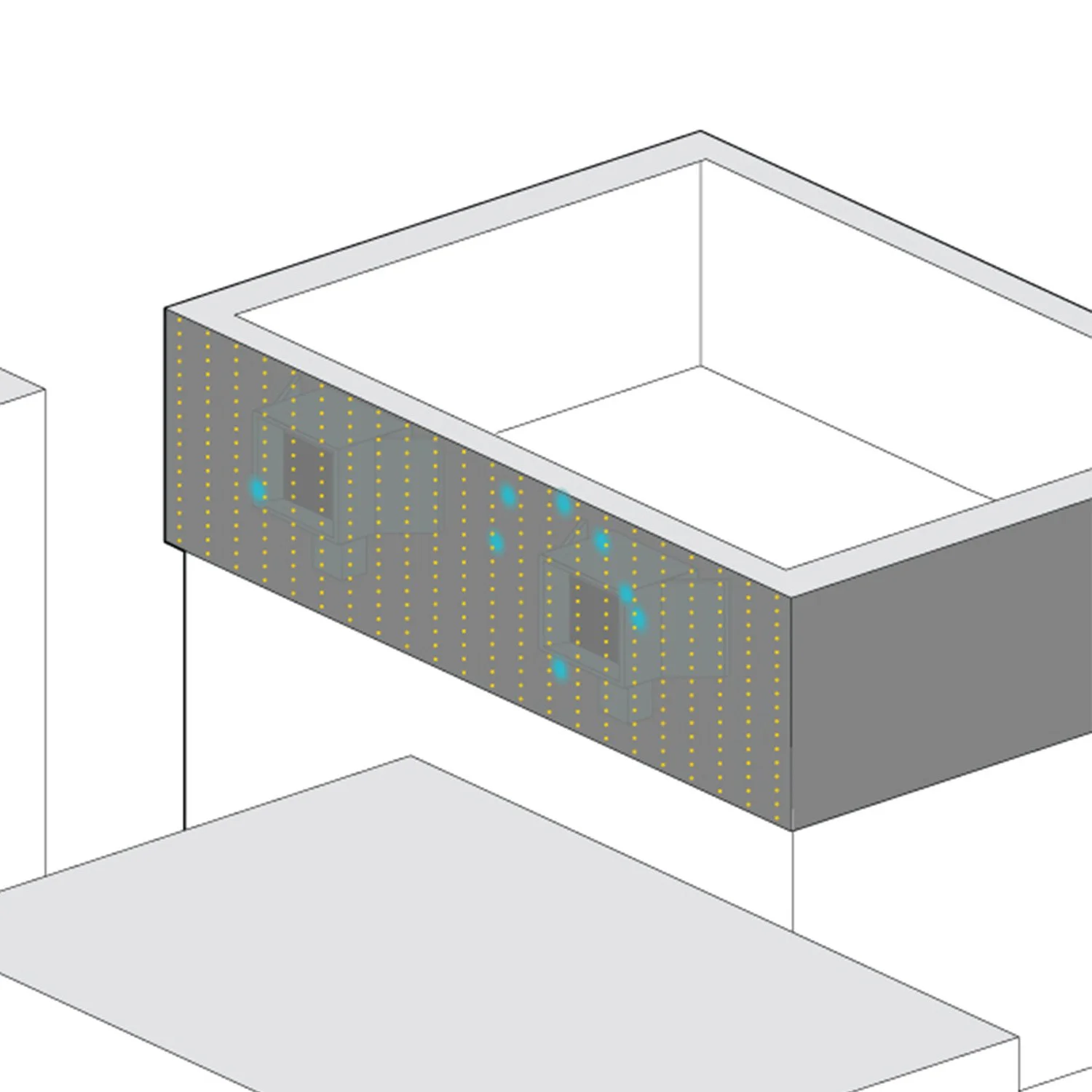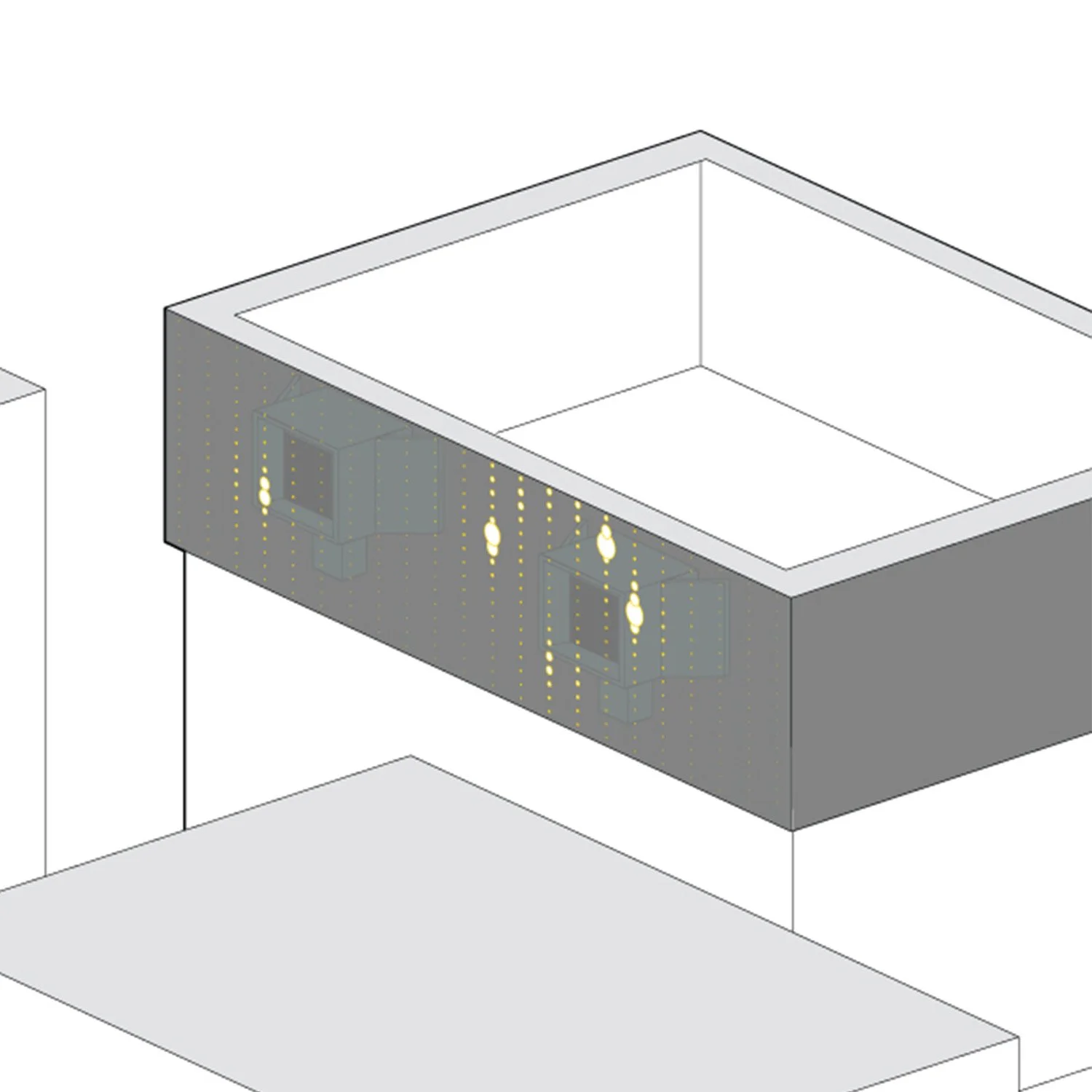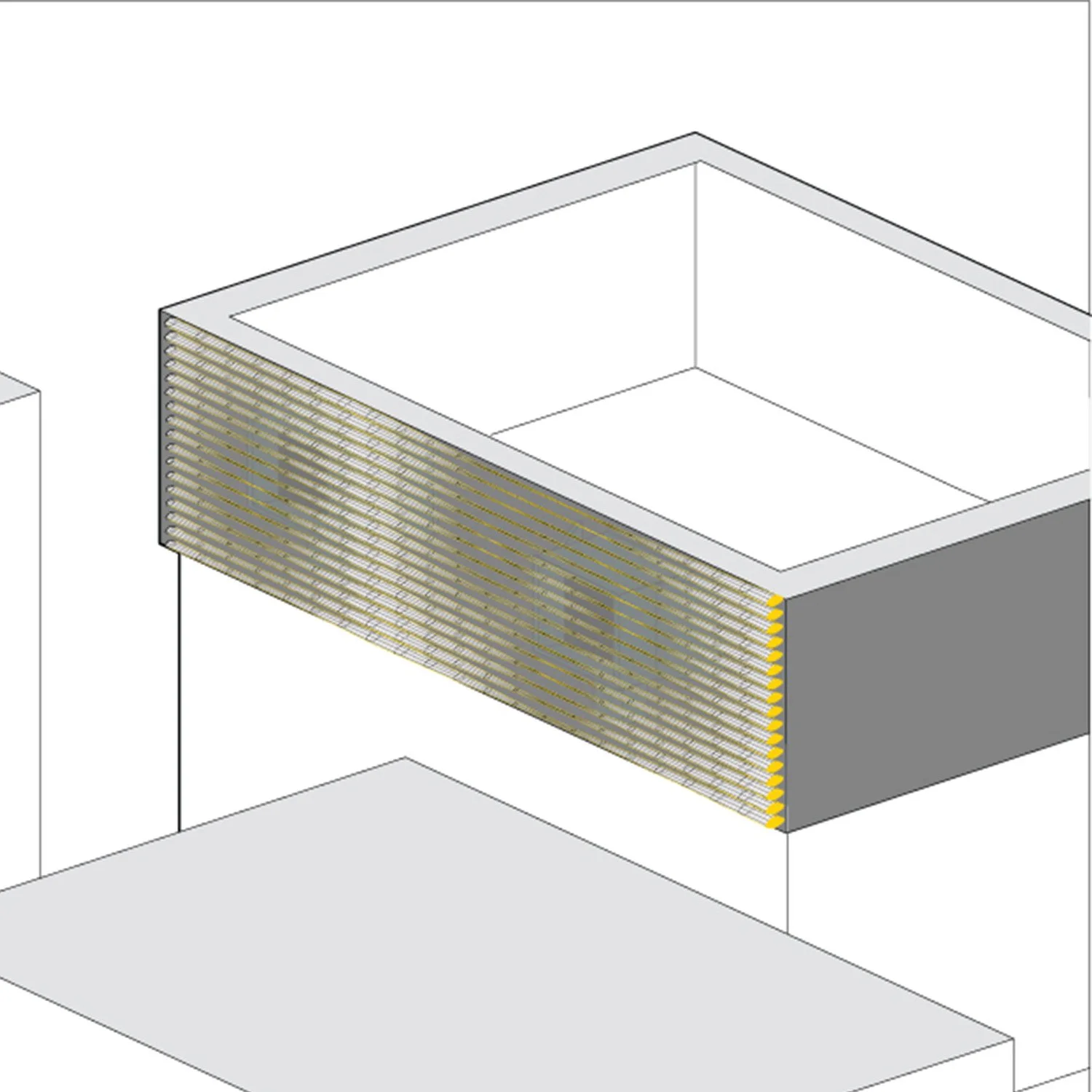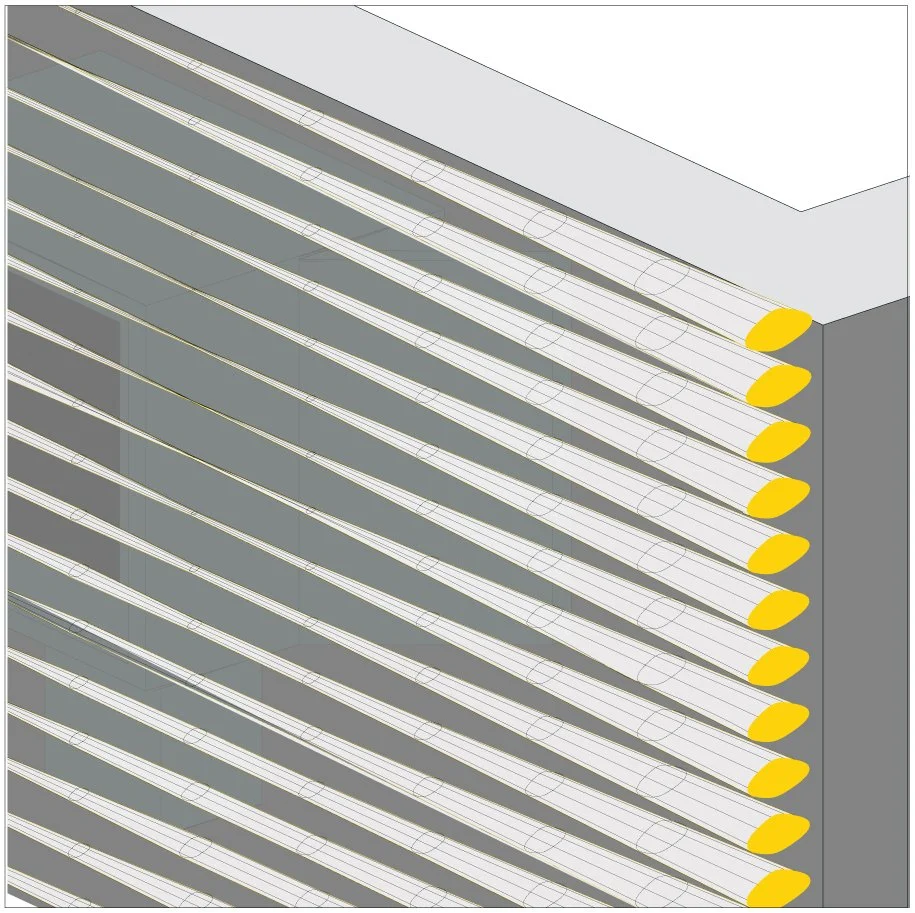Parametric Screening System for Rooftop Wind Turbines
This is a professional project conducted in 2022 for a client specializing in rooftop wind turbines. The client tasked our team to develop strategies to integrate their rooftop wind turbine design seamlessly into the architecture of a building. My focus in this effort was to develop a façade system to optimize wind flow to the turbines to maximize energy generating potential while also creating a visually interesting, dynamic design to screen the turbine units.
The parametric louvered façade/screening system was developed with Grasshopper and Rhino was designed to be informed by wind flow striking the façade. The parametric model dynamically responds to wind flow and changes the cross sectional profiles of louvers. The intent was to have the façade/screening system open up in locations of high wind flow and to adjust the cross sectional profiles of the louvers to increase air speed and reduce air turbulence to optimize steady airflow to the wind turbine units.
Step 1
Generate wind flow geometry and solve for curve-brep intersections to simulate where wind strikes the façade.
Step 2
Populate façade surface with 2D a point array.
Step 3
Apply K-Nearest Neighbor algorithm to cluster the points generated in step 2 to the closest curve-brep intersection from step 1.
Step 4
Calculate the average distance of points within each cluster to cluster centroid and use the metric to determine louver spacing and profiles.
Step 5
At each point on the facade generated in step 2, generate cross sectional louver profiles, sized based on metrics derived in step 4.
Step 6
Adjust louver cross sectional profiles to optimize air flow.
Step 7
Organize louver section profiles into rows and loft surface geometry between each each profile to create the louver system.














